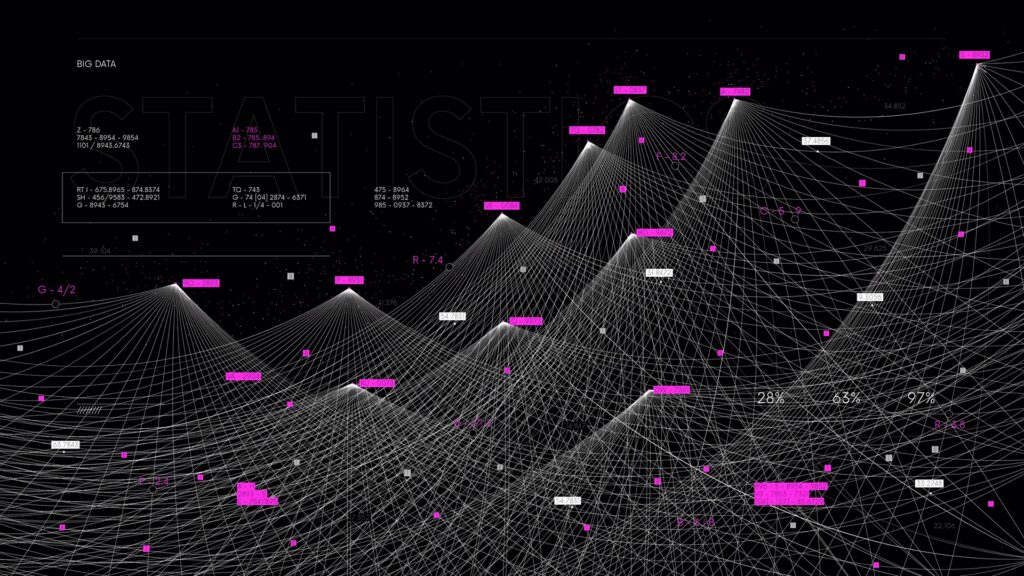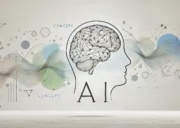When configuring an AI Algorithm, pattern recognition is key. From the designs of buildings to the seeds of a sunflower, we’re constantly surrounded by patterns, even if we don’t always realize it.
It’s no surprise, therefore, that patterns are used to inform some of the most cutting-edge technological advancements in the form of machine learning.
Self-service chatbots, self-driving cars, and ecommerce recommender systems are all built using machine learning on a basis of pattern recognition.
In this article, we’re going to take a look at what a pattern is, and how pattern recognition works when it comes to computers. Then we can take a look at the uses of pattern recognition in machine learning and artificial intelligence, and why it’s so effective.
Let’s dive in.
What is a Pattern?
A pattern is a phenomenon that regularly repeats based on certain rules or conditions. Patterns are found all around us, and recognising them is key to both human and machine learning.
There are many different types of patterns, including word patterns, number patterns, design patterns, and logic patterns.
What is Pattern Recognition?
Pattern recognition is the process of identifying trends in order to determine a pattern. This can be done physically, mathematically, or through the use of algorithms.
In machine learning, pattern recognition compares incoming data against existing information stored in databases. This is accomplished through the use of machine learning algorithms.
The role of Machine Learning
Pattern Recognition is essentially a derivative of machine learning, which involves training machines to identify patterns and then applying what it learns to practical problems. The processes of pattern recognition and machine learning can be divided into two stages;
- The Explorative Stage, during which the algorithm searches for patterns, and;
- The Descriptive Stage, which is when the algorithm categorizes these patterns.
Broadly speaking, the recognition process of pattern recognition follows these steps;
- Data is gathered.
- Data is preprocessed in order to ensure and enhance performance. This is often accomplished with the aid of programs such as the MapReduce algorithm, which allows large datasets to be processed in parallel.
- Data is examined and searched for common elements and relevant features.
- Clustering and classifying of the data.
- Analysis is performed to gather insights from the data.
- Insights are extracted and used in practice.
Machine learning models can be built using a variety of programming languages, such as Python, JavaScript, and Spark. Each has different additional tools available which can assist in the process, such as Spark stream processing, which makes it easier to process large volumes of data when training models.
Pattern recognition and machine learning have a variety of applications in many different industries. They can be used for data mining, image processing, and data analysis, to name but a few. They are even being used for cybersecurity to detect threats, which further highlights the risk on using unsafe proxies.
The role of AI Algorithms
There are a few classifications of algorithms used for pattern recognition in machine learning.
- Supervised Algorithms
Supervised algorithms can also be referred to as classification. With supervised algorithms, a two-stage methodology is used to identify patterns. The first stage involves the development and construction of the model, and the second stage involves predicting new or unseen objects.
Firstly, existing data should be divided into two sets, a training set and a test set. Using the training set, the model should be fed data using decision trees or other suitable machine-learning algorithms. This gives the model the ability to learn and recognize patterns.
The test set can then be used to validate the predictions made by the training set. As the values of the test set are already known, the validity of the predictions made by the model can be accurately assessed.
A fully trained and tested model is called a classifier, which can then be utilized to make predictions regarding unseen objects or data.
- Unsupervised Algorithms
Unsupervised algorithms use a ‘group by’ approach, in contrast to the classification approach adopted by supervised algorithms. This involves observing data patterns and grouping them based on similarities found within them.
Grouping items based on their similarities is known as clustering. Rather than relying on previously known information, clustering uses methods such as hierarchical algorithms to assign data to groups with other similar objects.
- Deep Learning
Deep learning is a highly specialized type of machine learning, which takes inspiration from the workings of the human brain. Artificial neural networks are used to identify more complex patterns, which have applications in natural language processing and image processing.
Pattern Recognition Techniques
Alongside the different types of algorithms used in pattern recognition, there are also several different techniques that can be used. Which technique is adopted will depend largely on the type of data that the model is to be presented with, and the intended machine-learning function of the completed model.
- Statistical Pattern Recognition
A statistical pattern recognition model relies on historical statistical data. It learns from examples, collecting and processing observations. From here, the model learns to generalize, applying these rules to new observations.
- Syntactic Pattern Recognition
Sometimes referred to as structural pattern recognition, syntactic pattern recognition deals with primitives. These are sub-patterns that are less complex, such as words. The pattern is the way in which these primitives connect, for example, how words connect to form sentences.
- Neural Pattern Recognition
A neural pattern recognition model requires artificial neural networks. These networks can learn complex, nonlinear input-output relations, and then undergo sequential staining procedures in order to ultimately adapt themselves to the data presented to them.
Applications of pattern recognition
Pattern recognition sees use in a variety of industries and is an incredibly versatile practice. Here are some of the most common uses that you may have come across in your everyday life.
- Trend Analysis
Pattern recognition can be used to identify business trends, such as the sales made by a particular organization. From here, predictions can be made about future sales. This information can then be used when planning ahead.
Trends can also be identified in the stock market. Pattern recognition and machine learning can be used by artificial intelligence (AI) in order to make sense of the unpredictable chaos that is the stock market, thus providing financial consultation.

- Computer Vision
Computer vision is a field of AI that enables computers to derive information from images. Pattern recognition is incredibly important here, as it can be used to identify single objects within images.
The machine will compare an image with potentially millions of other similar images stored in its database, to identify similar patterns. This has applications in a number of instances, such as in the biomedical field, where it can be used to detect cancer.
- Ecommerce
One of the most popular tools for ecommerce is a recommender system, which is made possible by pattern recognition. These systems gather information about the purchase history and browsing history of shoppers, and then suggest other products that they may be interested in based on this.
- Biometrics
Face recognition and fingerprint detection are common in many smartphone devices. Both these features are powered by pattern recognition. A variant of image recognition, these algorithms make it possible to employ sophisticated security features in everyday items.
- Natural Language Processing
Pattern recognition makes possible the use of several programs which rely on identifying words and their meanings. These include chatbots, translation tools, spam filters, sentiment analysis programs, and even spelling and grammar checkers.
Benefits of Pattern Recognition
As you can see, pattern recognition techniques have a wide range of applications, and there are numerous reasons why they’re worth using in these ways.
These techniques are easy to set up and highly automated, meaning that they don’t require much of a time investment to implement. On top of this, it’s often not as complicated as many other areas of machine learning and artificial intelligence, which makes it more accessible to developers and data scientists with a range of skill levels and experience.
The process of developing machine learning models can be automated through the use of machine learning pipelines, which can further streamline workflows and simplify the process.
The wide range of pattern recognition uses means that it is incredibly versatile, and is a worthwhile practice in many use cases. An understanding of pattern recognition can help to provide real-time solutions to problems in a number of fields, from biomedicine to ecommerce.
In machine learning, pattern recognition is incredibly useful as it can be used to identify, classify, and predict hidden and untraceable data. The learning techniques used result in suitable predictions and worthwhile insights.
Tools Used for Pattern Recognition
A number of tools are available which can be used to develop pattern recognition and machine learning models, alongside a number of courses which can help you get to grips with the key concepts.
- IBM Watson Studio – An open-source tool provided by IBM, it is used for building and deploying machine learning models on a desktop.
- Microsoft Azure Machine Learning Studio – Providing an entry point for those of all skill levels, Microsoft Azure Machine Learning Studio provides a graphical user interface through which users can drag and drop elements to build and deploy machine learning models.
- Google Cloud AutoML – Using neural networks and reinforcement learning as the basis, users can construct high-quality machine learning models with minimum requirements.
Configure Your AI Algorithm With Pattern Recognition
Being able to recognize various rules, events, and conditions is the key to pattern recognition, which in turn is instrumental in many machine learning applications.
There are numerous ways this can be achieved, with a number of different types of algorithms, and techniques to implement them, which can be used to build pattern recognition features and machine learning models.
From ecommerce to biomedicine, pattern recognition has a wealth of uses, so it’s worthwhile getting to grips with how it works and implementing it to make your AI smarter and more effective.



